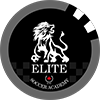The well-being of our athletes is the utmost important. While one may feel ready to participate in activities, if/when an injury occurs that requires medical assistance, all players must present a note from a doctor prior to resuming activities.
What is a concussion?
A concussion is a neurologic injury that causes a temporary disturbance in brain cells. It is the result of extreme acceleration or deceleration of the brain within the skull. The common misconception is that you must be hit in the head to cause a concussion injury – this is not true! Because a concussion is the result of acceleration or deceleration of the brain, a concussion can happen with a significant blow to anywhere on the body, provided sufficient acceleration/deceleration is transmitted to the brain tissue, head or face. There may be no other visible signs of a brain injury. It can cause changes in the brain that may not be seen in a CT scan or X-Ray. Balance, reaction time and cognitive skills can also be impacted.
Symptoms of a concussion range from mild to severe and can last for or appear within hours, days, weeks, or even months. In some cases, there may be no symptoms at all. If you suspect a concussion or notice any of the symptoms listed below, contact your doctor immediately. In severe cases, proceed to an Urgent Care Centre or Emergency Room immediately.
Loss of consciousness or responsiveness • Loss of motion/slow to rise
Unsteady on feet/balance issues • Grabbing/Clutching the head
Dazed, vacant or blank look• Vomiting
Disoriented • Bleeding from the nose/ears
Sensitive to light • Unequal pupils (eye)
Seizures or convulsions • Deteriorating conscious state
Confusion/disorientation • Complaints of pain/headache
Complaints of dizziness/nausea • Complaints of fuzzy/blurred vision
Inability to concentrate • Easily upset/angered (emotional)
Nervous/Anxious • Complaints of tingling/burning feeling in arms & legs
Tired/sleeping more or less than usual • Memory loss-unable to remember events leading up to the incident
Trouble falling asleep • Deteriorating conscious state
**Please note that complaints of neck pain should be addressed immediately as a head injury may also result in a neck / spinal injury**
A player showing any signs/symptoms as listed on the Pocket Concussion Recognition Tool or as listed in this document must be removed from play immediately. All Coaches/Trainers are required to be familiar with the use of this tool and follow the Club’s protocol without question. The player is not to re-enter the game or practice:
Checklist
n the event of a loss of consciousness call 911 for assistance immediately. Do not move the player unless necessary for safety reasons.
Ensure that a member of the team staff stays with the player.
Notify any family members immediately if they are present.
The player must be evaluated by a physician before returning to play. Documentation from the physician is required. The average recovery period is 10 to 14 days but can sometimes be longer.
A graduated “Return to Play Process” using Ontario Soccer’s Return to Play policy.
Coaches must complete the required injury report and submit it to Elite Soccer Academy within 24 hours of the incident, see Elite Soccer Academy website for download
RETURN TO SPORT PROTOCOL
Coaches must complete the required injury report and submit it to Elite Soccer Academy within 24 hours of the incident.
A suspected concussion has been identified and the player is removed from play. Head Coaches hold the final decision to remove players with a suspected concussion, can be found here:
REMOVE FROM SPORT PROTOCOL SUMMARY
Ontario Soccer Suspected Concussion report
A suspected concussion must be filled out when a coach suspects a player has suffered a concussion & the player is removed from play. Head Coaches hold the final decision to remove players with a suspected concussion, can be found here:
SUSPECTED CONCUSSION REPORT FORM
This is a multi-part process that requires supervision from the player’s health care provider at each stage. Ontario Soccer’s 6 stage Return to Play protocol can be found by clicking here:
RETURN TO SPORT PROTOCOL CHECKLIST
6 Stage Protocol
Limit activity – Physical & cognitive rest
Light aerobic exercise – Walking, swimming, cycling
Sport-specific exercise – Light running skills, no heading
Non-contact training drills – Passing/Movement
Full contact practice – Normal training cycle
Return to Play – Normal Game Play
**A minimum of 24 hours is required between each stage.**
Any recurrence of symptoms requires the player to return to the previous level. Elite Soccer Academy Coaches, Assistant Coaches, Managers and Trainers are not authorized to oversee Return to Play processes.
Base Line Testing
Many soccer clubs recommend that players involved in competitive programs undergo Base Line Testing before the beginning of the outdoor season. This should be done in a controlled environment under the supervision of an approved concussion testing facility.
Caution
Elite Soccer Academy is committed to providing a safe environment for all players regardless of age and gender. It is, however, the responsibility of the parent to ensure that appropriate professional care is provided to players under the age of 18 in the event of injury. In the event of a concussion diagnosis, premature return to play can result in serious and sometimes permanent injury, particularly in the event of a second impact. Parents should seek ongoing medical evaluation for the benefit of the player’s long-term health and safety and find an approved concussion testing facility.
ONTARIO SOCCER CONCUSSION RESOURCES
If you suspect an athlete or your child suffered a concussion, contact your health care provider or:
HOLLAND BLOORVIEW
